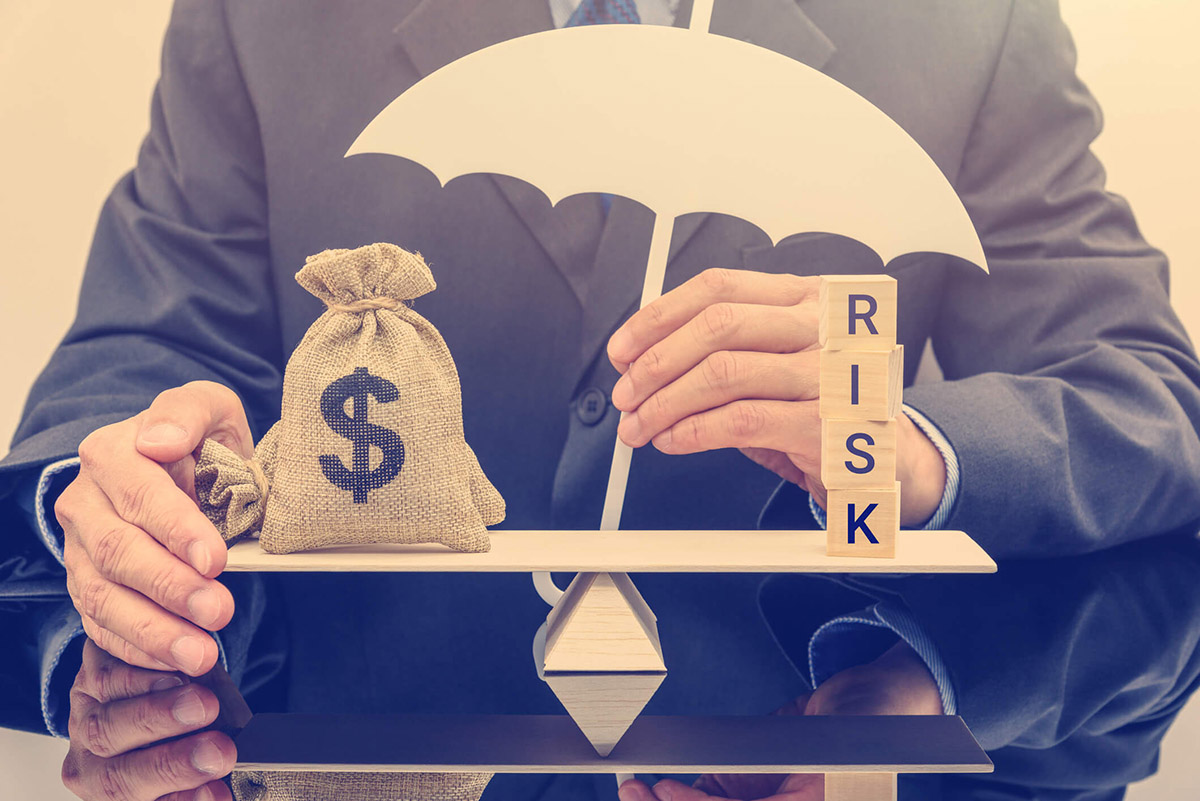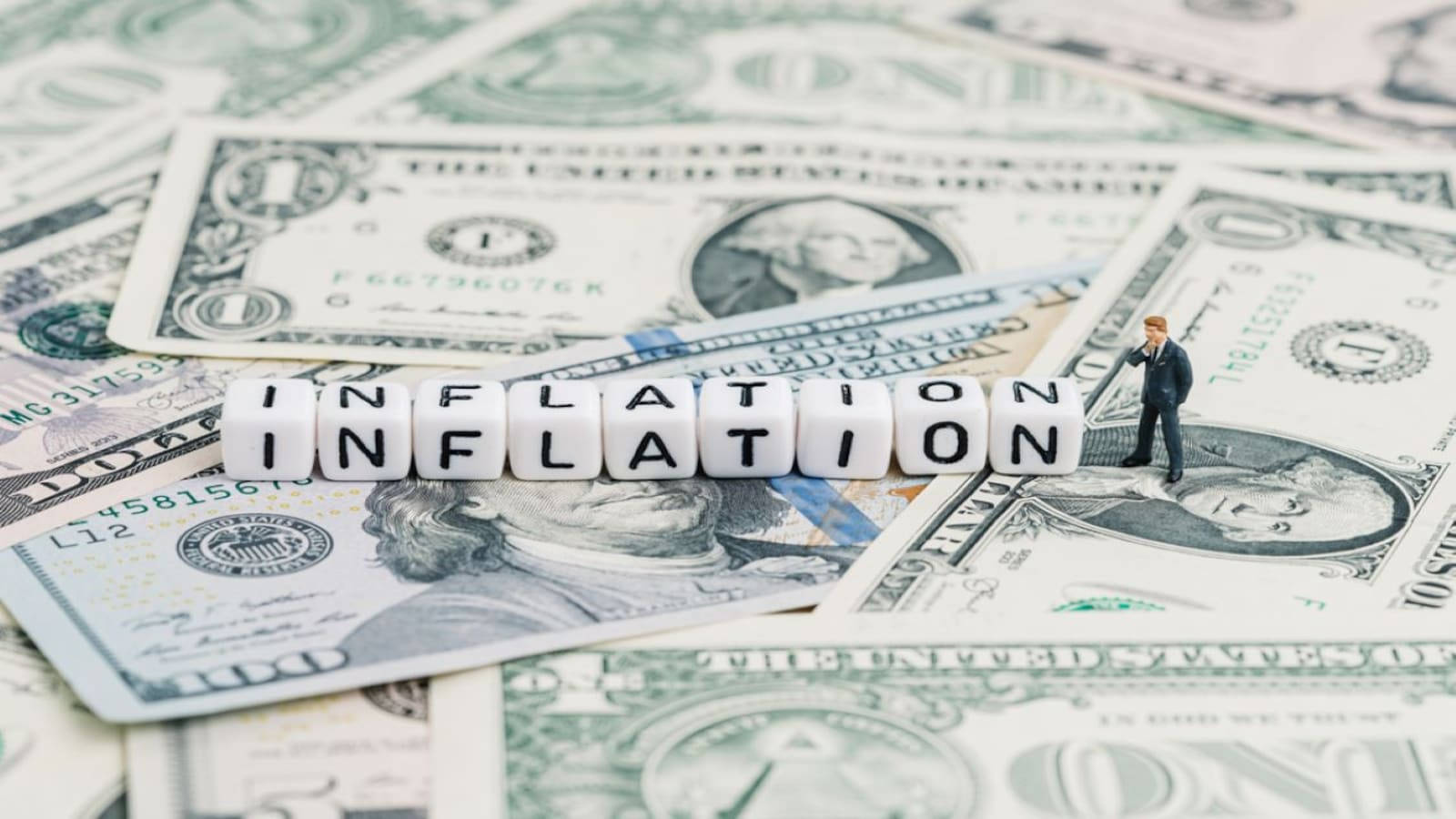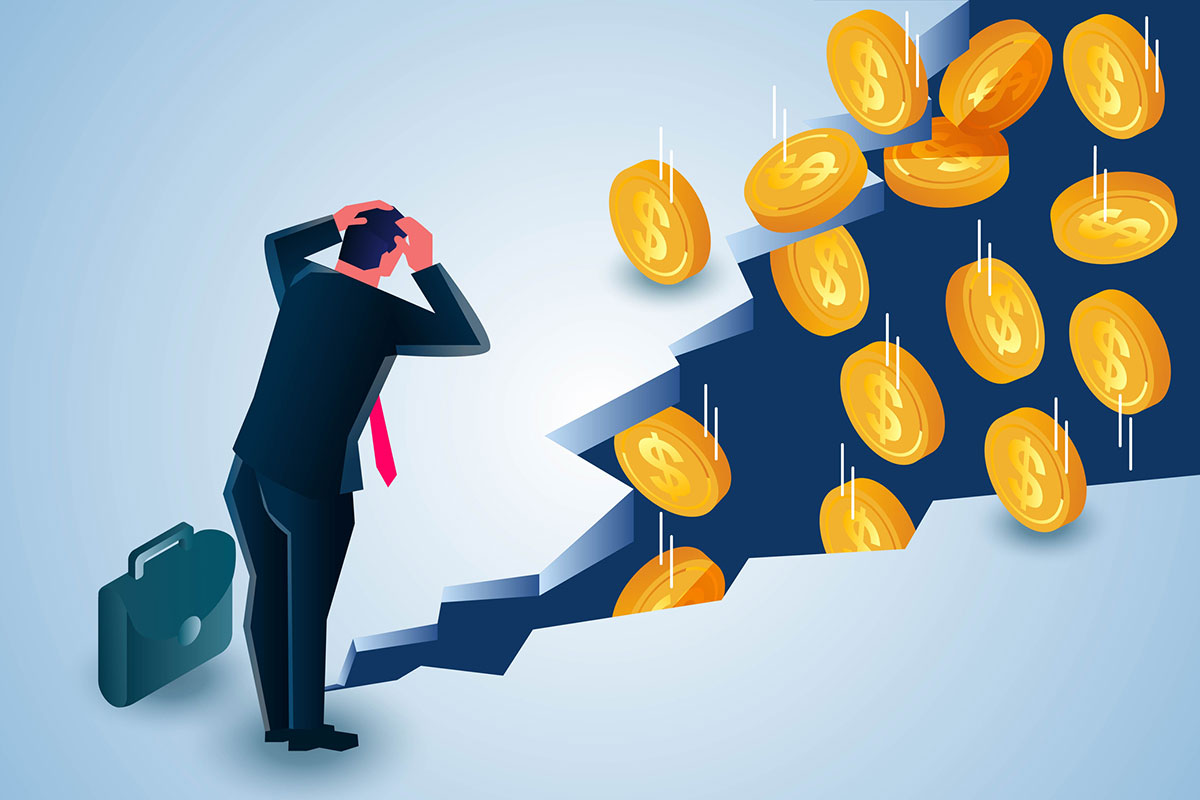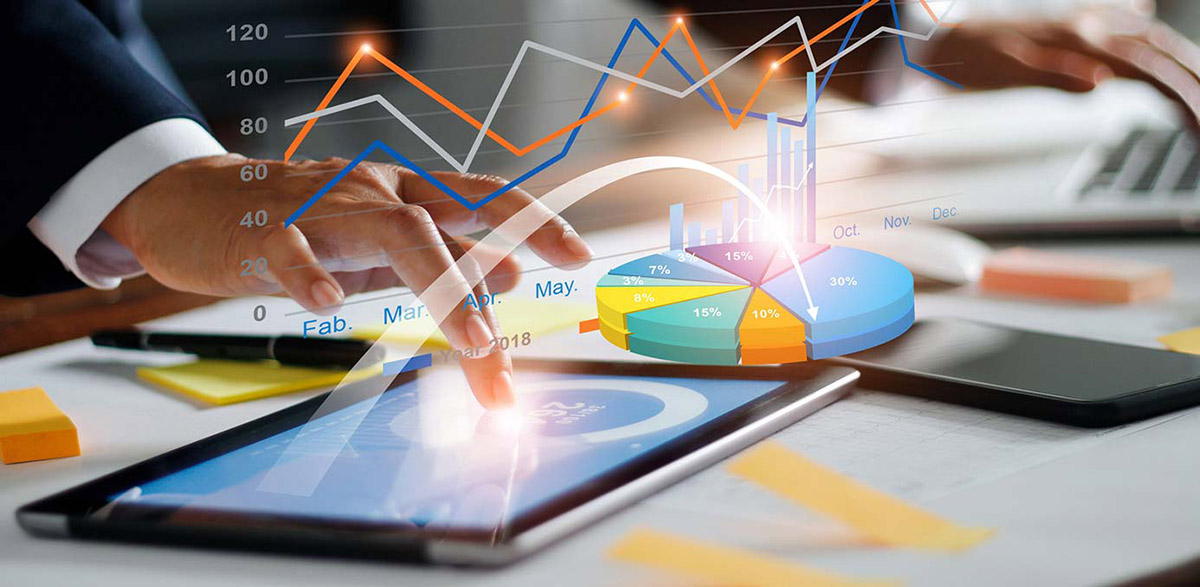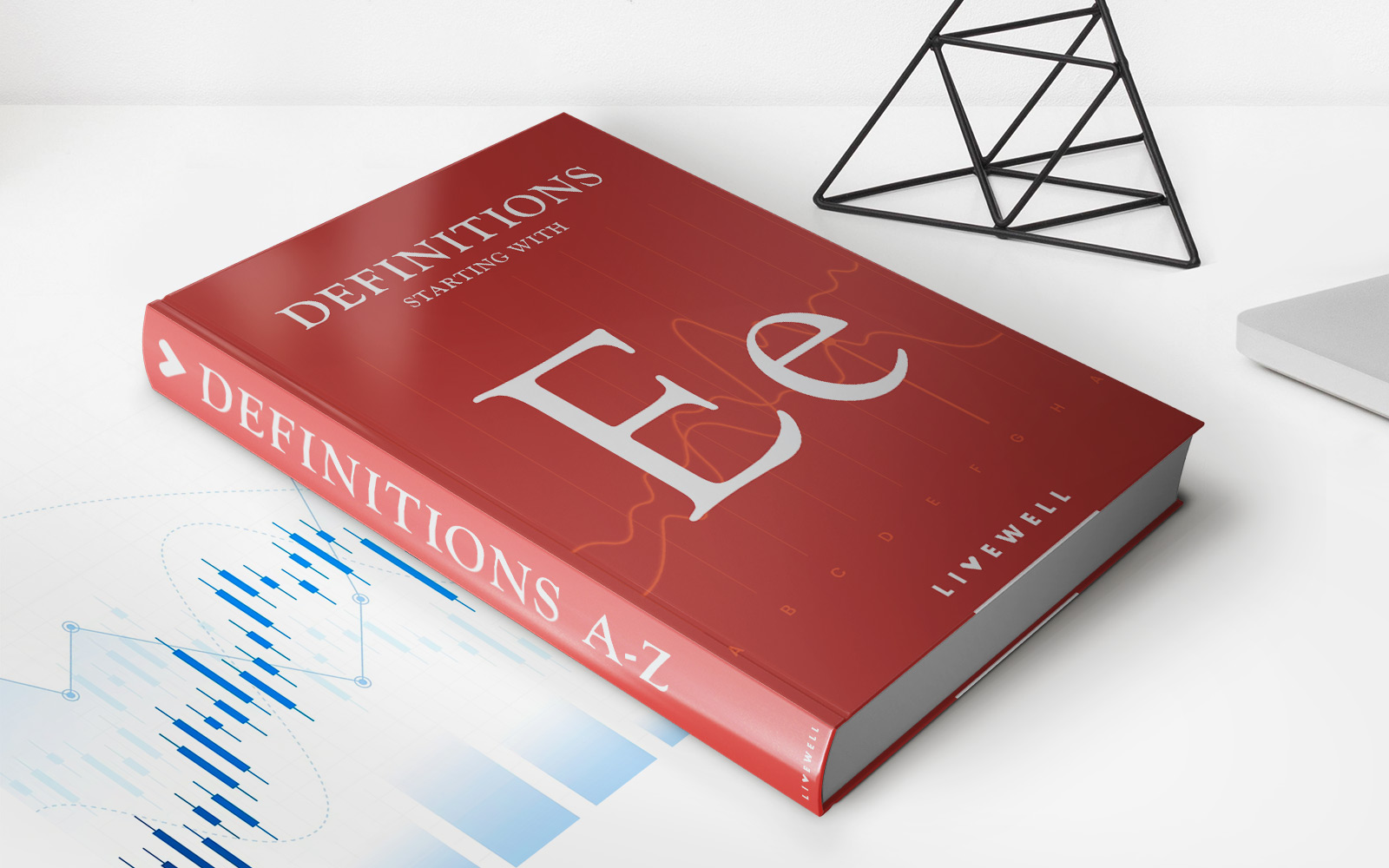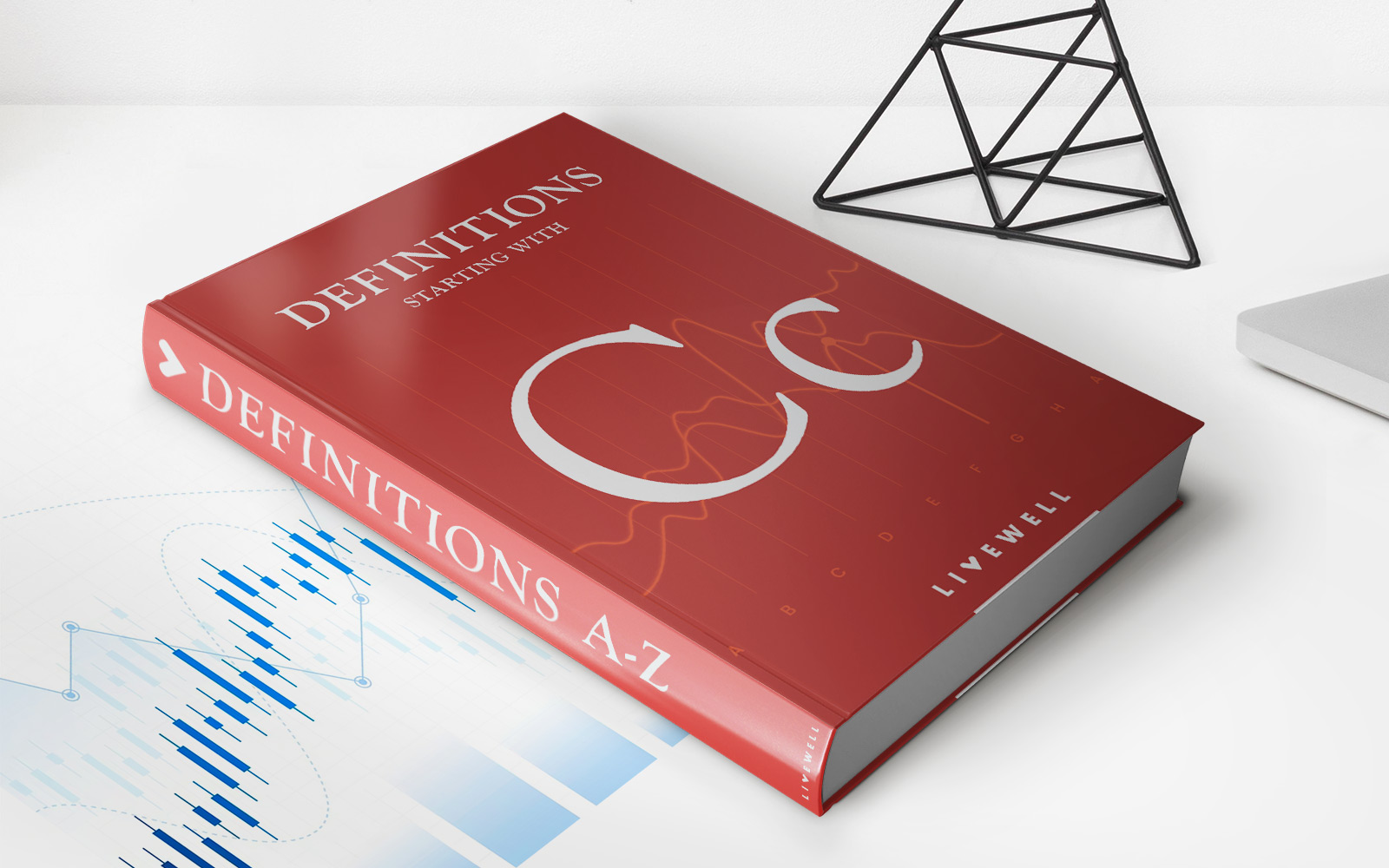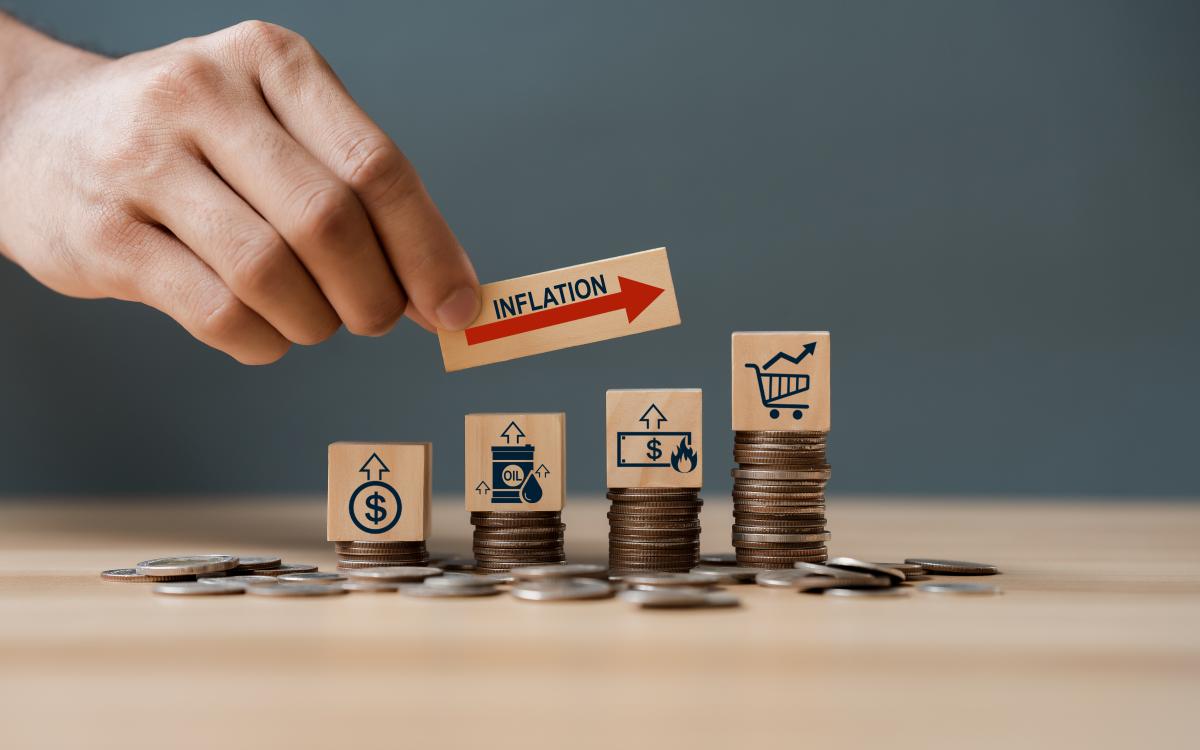

Finance
Why Is Inflation Considered A Financial Risk
Modified: December 30, 2023
Learn why inflation is viewed as a financial risk and its impact on the economy. Understand the implications for your personal and business finances
(Many of the links in this article redirect to a specific reviewed product. Your purchase of these products through affiliate links helps to generate commission for LiveWell, at no extra cost. Learn more)
Table of Contents
Introduction
Inflation is a term that is often thrown around in discussions about the economy and finances. But what exactly is inflation and why is it considered a financial risk? In simple terms, inflation refers to the increase in the average prices of goods and services over a period of time. When inflation occurs, the purchasing power of currency decreases, leading to a decrease in the value of money. This has wide-ranging impact on individuals, businesses, and governments alike.
Inflation is measured by various economic indicators, such as the Consumer Price Index (CPI) or the Producer Price Index (PPI), which track the changes in prices of a basket of goods and services. Central banks play a crucial role in managing inflation, as they have the authority to control interest rates and implement monetary policies to keep inflation in check. Understanding the potential risks associated with inflation is important to make informed financial decisions and protect one’s assets.
In this article, we will delve into some key factors that make inflation a financial risk and explore how it affects different aspects of personal and business finances. From eroding purchasing power to impacting investment performance, we will examine the potential dangers posed by inflation and discuss strategies to hedge against its negative effects. By gaining a deeper understanding of inflation and its implications, you will be better equipped to navigate the ever-changing financial landscape.
Definition of Inflation
Inflation is a concept that refers to the general increase in prices of goods and services in an economy over a specific period of time. It is often measured as an annual percentage rate, indicating the average rate at which prices are rising. Inflation can be caused by various factors, such as an increase in production costs, changes in demand and supply dynamics, monetary policies, and external factors like natural disasters or geopolitical events.
When inflation occurs, the purchasing power of money decreases. This means that the same amount of money will buy fewer goods and services compared to a previous period. For example, if the inflation rate is 2%, it indicates that prices have increased by 2% on average. As a result, you will need 2% more money to purchase the same goods and services as before.
There are different types of inflation, categorized based on the factors driving it. Demand-pull inflation occurs when there is excess demand for goods and services, leading to an increase in prices. Cost-push inflation, on the other hand, happens when production costs rise, such as wages, raw materials, or energy prices, which ultimately gets passed on to consumers through higher prices.
Inflation has both short-term and long-term effects on an economy. In the short-term, moderate inflation can stimulate economic growth and encourage spending. However, if inflation rises too rapidly or becomes persistent, it can have detrimental effects on individuals, businesses, and the overall economy. It erodes the value of money, reduces consumer purchasing power, increases production costs, and can lead to economic instability.
Central banks and governments play a key role in managing inflation through monetary policies and fiscal measures. They monitor inflation rates closely and aim to maintain price stability and sustainable economic growth. By understanding the definition and causes of inflation, individuals and businesses can make better financial decisions and implement strategies to protect their wealth from the risks associated with inflation.
Economic Impact of Inflation
Inflation has a significant impact on the overall economy, affecting various sectors and stakeholders. Understanding the economic consequences of inflation is crucial for individuals, businesses, and policymakers. Let’s explore some key effects of inflation:
1. Purchasing Power Erosion: One of the most immediate and noticeable impacts of inflation is the erosion of purchasing power. As prices rise, the same amount of money can buy fewer goods and services. This reduces the standard of living for individuals and decreases their ability to afford basic necessities.
2. Reduced Savings: Inflation erodes the value of money over time, which means that savings held in cash or low-interest accounts lose purchasing power. This can discourage individuals from saving and incentivize them to seek alternative investment options to preserve and grow their wealth.
3. Income Redistribution: Inflation affects different groups of people differently. Those who rely on fixed incomes, such as pensioners or individuals on fixed salaries, may struggle to keep up with rising prices. On the other hand, individuals with inflation-adjusted incomes or assets tied to inflation, such as real estate properties, may benefit from rising prices.
4. Uncertainty and Economic Volatility: High levels of inflation can lead to economic instability and uncertainty. Businesses may find it challenging to plan for the future as they face unpredictable costs and reduced demand due to higher prices. Investors may also become hesitant to invest, leading to reduced economic growth.
5. Interest Rate Fluctuations: Inflation has a direct impact on interest rates. Central banks often raise interest rates to combat inflation by reducing the amount of money in circulation. Higher interest rates can curb borrowing and spending, dampening economic activity. Conversely, during periods of low inflation or deflation, central banks may lower interest rates to stimulate borrowing and investment.
6. Inflationary Expectations: Expectations of future inflation can influence economic behavior. If individuals anticipate higher inflation, they may adjust their spending habits, investment choices, and demand for wages or salary increases. These expectations can create a feedback loop, leading to self-fulfilling prophecies of inflation.
7. International Competitiveness: Inflation can impact a country’s competitiveness in the global market. If a country experiences higher inflation than its trading partners, its goods and services become relatively more expensive. This can lead to a decrease in exports and an increase in imports, causing trade imbalances and affecting the overall balance of payments.
It is important to note that not all inflation is detrimental. Moderate inflation can be a sign of a healthy and growing economy. However, when inflation becomes persistently high or rapidly accelerates, it poses significant challenges and risks to economic stability and financial well-being. Managing inflation effectively is a critical aspect of economic policy to ensure sustainable growth and prosperity.
Financial Risks Associated with Inflation
Inflation poses several financial risks that can impact individuals, businesses, and investors. Understanding these risks is essential for implementing strategies to protect against the negative effects of inflation. Let’s explore some of the key financial risks associated with inflation:
1. Purchasing Power Erosion: As mentioned earlier, inflation erodes the purchasing power of money. Over time, the same amount of money can buy fewer goods and services. This affects individuals’ ability to maintain their standard of living and meet their financial goals.
2. Interest Rate Fluctuations: Inflation often leads to changes in interest rates. Central banks may raise interest rates to combat inflation, which can increase borrowing costs for individuals and businesses. Higher interest rates can reduce purchasing power and dampen economic activity.
3. Investment Performance: Inflation can significantly impact investment performance. Without adequate measures to counter inflation, the real return on investments, such as bonds or savings accounts, may diminish. This can erode the value of investment portfolios and affect long-term financial goals.
4. Currency Devaluation: Inflation can result in the devaluation of a country’s currency. When the value of money decreases, it can reduce the purchasing power of individuals and affect international trade. It can also lead to higher import costs, contributing to inflationary pressures.
5. Business Costs and Profitability: Inflation increases the cost of production and raw materials for businesses. This can squeeze profit margins and make it challenging to maintain competitiveness in the market. Businesses may be forced to pass on higher costs to consumers, which can result in reduced demand and sales.
6. Income Strain: Inflation can put a strain on individuals’ incomes, particularly those with fixed incomes or stagnant wages. If income levels do not keep pace with rising prices, individuals may find it difficult to cover their expenses and maintain their financial well-being.
7. Retirement Planning: Inflation poses risks to retirement savings and planning. Over time, the cost of living can increase, requiring individuals to have more substantial savings to sustain their lifestyle during retirement. Failing to account for inflation in retirement planning can result in financial insecurity during the later stages of life.
To mitigate these financial risks, individuals and businesses can implement various strategies. These include investing in inflation-protected securities, diversifying investment portfolios, considering real estate investments, and negotiating contracts with inflationary clauses. Additionally, saving and investing in assets that outpace inflation can help maintain purchasing power over the long term.
By being aware of the financial risks associated with inflation and taking proactive measures to mitigate them, individuals and businesses can protect their finances and maintain financial stability in an inflationary environment.
Purchasing Power Erosion
One of the most significant risks associated with inflation is the erosion of purchasing power. Inflation reduces the value of money over time, meaning that the same amount of money can buy fewer goods and services. This can have a profound impact on individuals’ ability to maintain their standard of living and meet their financial goals. Let’s take a closer look at how inflation erodes purchasing power:
1. Rising Prices: Inflation leads to an increase in the overall price level of goods and services. This means that the cost of everyday items, such as groceries, housing, and healthcare, tends to rise over time. As a result, individuals need to spend more money to purchase the same quantity of goods or services as before.
2. Reduced Affordability: When prices rise due to inflation, individuals may find that their income stretches less far. This can make it challenging to afford essential items and may force individuals to cut back on discretionary spending or sacrifice quality in the goods they purchase.
3. Impact on Savings: Inflation can also have a detrimental impact on savings. If the rate of inflation exceeds the rate of interest earned on savings accounts or low-risk investments, the real value of those funds decreases over time. This means that individuals may need to save larger amounts of money to achieve their financial goals or maintain their desired lifestyle.
4. Retirement Planning: Inflation presents a particular challenge when it comes to retirement planning. As the cost of living increases, individuals need to account for rising expenses during their retirement years. Failing to adequately plan for inflation can result in a significant reduction in purchasing power, putting retirees at risk of financial insecurity.
5. Wage and Salary Adjustments: Inflation can impact wage and salary levels as well. If prices are rising, individuals may expect their wages to increase to maintain their purchasing power. However, wage adjustments may not always keep up with the rate of inflation, leading to a decrease in real wages.
To protect against the erosion of purchasing power, individuals can take several steps. These include investing in assets that historically outperform inflation, such as stocks or real estate, diversifying their investment portfolio, and considering inflation-protected securities. It is also essential to regularly review and adjust financial plans to account for changing economic conditions and inflationary pressures.
By being proactive and mindful of the impact of inflation on purchasing power, individuals can make informed financial decisions, protect their lifestyle, and work towards their long-term financial goals.
Interest Rate Fluctuations
Another significant financial risk associated with inflation is the fluctuations in interest rates. Inflation and interest rates are closely intertwined, and changes in one can directly impact the other. Understanding how inflation influences interest rates is crucial for individuals, businesses, and investors. Let’s explore the relationship between inflation and interest rates:
1. Central Bank Policies: Central banks play a vital role in managing inflation through monetary policies. When inflation rates rise above the target level set by central banks, they often respond by increasing interest rates. Higher interest rates reduce the amount of money circulating in the economy and can help curtail excessive borrowing and spending, thus aiming to mitigate inflationary pressures.
2. Borrowing Costs: Fluctuations in interest rates directly impact the costs of borrowing for individuals and businesses. When central banks raise interest rates, it becomes more expensive to borrow money, as lenders increase their rates to compensate for higher borrowing costs. This can affect the affordability of mortgages, personal loans, and business loans, potentially impacting the purchasing power and investment decisions of individuals and businesses.
3. Consumer Spending and Investment: Changes in interest rates influence consumer spending and investment behavior. Higher interest rates can discourage borrowing and lead to reduced consumer spending, which can have a ripple effect on businesses’ sales and profitability. Additionally, higher borrowing costs can affect individuals’ decisions to make long-term investments, such as real estate purchases or business expansions.
4. Fixed-Income Investments: Interest rate fluctuations impact fixed-income investments, such as bonds and certificates of deposit (CDs). When interest rates rise, the value of existing bonds with lower interest rates decreases, as new bonds with higher interest rates become more attractive to investors. This can result in capital losses for bondholders who sell their holdings before maturity. Conversely, falling interest rates can lead to capital gains for bondholders.
5. Mortgage Rates: Interest rate fluctuations also affect mortgage rates. When interest rates rise, mortgage rates tend to increase, making homeownership less affordable for buyers. Higher mortgage rates can dampen housing demand and potentially lead to a slowdown in the real estate market. Conversely, lower interest rates can stimulate housing demand and increase affordability.
6. Foreign Exchange Rates: Changes in a country’s interest rates can impact its exchange rates. Higher interest rates attract foreign investors looking for better returns, leading to an increase in demand for the country’s currency. As a result, the value of the currency may appreciate. Conversely, lower interest rates can make a country’s currency less attractive, potentially causing depreciation.
To navigate interest rate fluctuations, individuals and businesses should stay informed about central bank policies and economic indicators that influence interest rates. They can consider strategies such as locking in fixed-rate loans before rates increase, refinancing existing loans to take advantage of lower rates, or exploring investment opportunities that align with the prevailing interest rate environment.
By understanding the relationship between inflation and interest rates and being proactive in managing financial decisions in response to rate fluctuations, individuals and businesses can better protect their finances and optimize their borrowing and investment strategies.
Investment Performance
Inflation has a significant impact on investment performance, and understanding this relationship is crucial for investors seeking to grow and preserve their wealth. The effects of inflation on investment can vary depending on the asset class and prevailing economic conditions. Let’s examine some key considerations when it comes to investment performance and inflation:
1. Purchasing Power Erosion: Inflation erodes the purchasing power of money over time. If investment returns do not outpace inflation, the real value of the investment decreases. For example, if the annual inflation rate is 3% and an investment only yields a 2% return, the purchasing power of the investment actually declines by 1%. Therefore, it is essential for investments to generate returns that exceed the rate of inflation to preserve or increase purchasing power.
2. Fixed-Income Investments: Fixed-income investments, such as bonds or certificates of deposit (CDs), are particularly vulnerable to inflation. When inflation rises, the purchasing power of future interest payments and the principal value of fixed-income securities decrease. Consequently, investing in fixed-income securities with low or no inflation protection may result in diminished returns over time.
3. Equities and Real Estate: Historically, equities and real estate have shown the ability to outpace inflation over the long term. As inflation increases, companies and real estate properties may be able to raise prices, leading to higher revenues and returns. Inflation can also drive up the value of tangible assets, such as property, which can be an effective hedge against inflation. However, it is important to note that these asset classes may experience short-term volatility and are subject to market fluctuations.
4. Inflation-Protected Securities: Governments issue inflation-protected securities, such as Treasury Inflation-Protected Securities (TIPS), which offer built-in protection against inflation. The principal value of these securities is adjusted in line with changes in the Consumer Price Index (CPI). Investing in inflation-protected securities can help preserve the purchasing power of investments and offer a reliable hedge against inflation.
5. Diversification: Diversification is essential when it comes to managing the impact of inflation on investment performance. Spreading investments across various asset classes and sectors can reduce the risk of being overly exposed to one particular asset that may be negatively affected by inflation. Diversification allows investors to capture upside potential while minimizing downside risk.
6. Monitoring Economic Indicators: To navigate the impact of inflation on investment performance, investors should monitor key economic indicators, such as the Consumer Price Index (CPI) and inflation expectations. Understanding current and projected inflation trends can inform investment decisions and help adjust strategies accordingly.
Investors should consider consulting with financial advisors or investment professionals to develop a comprehensive investment strategy that considers the potential impact of inflation. Implementing a diversified portfolio, considering inflation-protected securities, and regularly reviewing and rebalancing investments can help mitigate the negative effects of inflation on investment performance.
By carefully managing investment decisions and seeking out opportunities that outpace or protect against inflation, investors can strive to maintain the real value of their investments and work towards their long-term financial goals.
Currency Devaluation
Inflation can often lead to currency devaluation, which refers to the decrease in the value of a country’s currency relative to other currencies. Currency devaluation is primarily driven by inflationary pressures and can have significant implications for individuals, businesses, and the overall economy. Let’s explore the relationship between inflation and currency devaluation:
1. Inflationary Pressures: When a country experiences high inflation, the value of its currency tends to decline. This is because the increase in prices erodes the purchasing power of the currency, making it less attractive to foreign investors and buyers. As a result, the demand for the currency decreases, leading to its devaluation in the foreign exchange market.
2. Trade Imbalances: Currency devaluation can impact a country’s trade balance. A devalued currency makes exports cheaper for foreign buyers, potentially boosting export competitiveness and increasing demand. However, it also makes imports more expensive, potentially leading to higher import costs and trade imbalances.
3. Inflation Importation: Currency devaluation can contribute to imported inflation. As the value of a currency declines, the cost of imported goods and raw materials increases. This can lead to higher production costs for businesses, potentially leading to domestic price increases.
4. Impact on Foreign Investment: A devalued currency can affect foreign investment flows. It may make it more expensive for foreign investors to invest in the country, as their capital may be worth less when converted into the domestic currency. This can potentially impact foreign direct investment (FDI) and hinder economic growth.
5. Tourism and Travel: Currency devaluation can also impact tourism and travel. A weaker currency can make a country more attractive to tourists, as their foreign currency can stretch further. This can potentially boost the tourism industry and stimulate economic growth.
6. Foreign Debt Burden: Currency devaluation can increase the burden of foreign debt. If a country has borrowed in a foreign currency, a devaluation of the domestic currency makes it more challenging to repay the debt. This can potentially lead to financial stress and economic instability.
To mitigate the impact of currency devaluation, countries may implement measures to stabilize their currency, such as tightening monetary policies or implementing exchange rate controls. Individuals and businesses can protect themselves by diversifying their assets, investing in international markets, and considering hedging strategies such as foreign exchange contracts or currency ETFs.
It is important to note that currency devaluation is not always negative. In certain cases, it can lead to increased export competitiveness and economic growth. However, it also carries risks and requires careful management to prevent destabilization of the economy.
By staying informed about the relationship between inflation and currency devaluation and taking appropriate measures to protect against potential risks, individuals, businesses, and policymakers can navigate the impact of currency devaluation on their finances and the overall economy.
Inflation Hedging Strategies
Given the financial risks associated with inflation, it is important for individuals, businesses, and investors to implement strategies that help protect against the erosion of purchasing power and mitigate the effects of inflation. These strategies, often referred to as inflation hedging strategies, aim to safeguard wealth and maintain the real value of assets. Let’s explore some effective inflation hedging strategies:
1. Investing in Equities: Historically, equities have shown the ability to outpace inflation over the long term. Investing in stocks of well-established companies that have a history of delivering consistent returns can help preserve purchasing power. However, it is important to consider diversification and invest in a mix of industries to reduce risk.
2. Real Estate Investments: Real estate can serve as an effective hedge against inflation. As prices rise with inflation, the value of real estate properties also tends to increase. Additionally, rental income from real estate assets can provide a steady stream of cash flow that can be adjusted over time to account for inflation.
3. Treasury Inflation-Protected Securities (TIPS): TIPS are government-issued bonds specifically designed to protect investors against inflation. The principal value of TIPS is adjusted based on changes in the Consumer Price Index (CPI), ensuring that investors receive a return that keeps pace with inflation. TIPS provide a reliable hedge against inflation and can be a valuable addition to a diversified investment portfolio.
4. Commodities: Investing in commodities, such as gold, silver, or oil, can offer a hedge against inflation. These assets have historically demonstrated the ability to maintain value during periods of inflation. However, it is essential to carefully consider the risks and volatility associated with investing in commodities.
5. Inflation-Indexed Annuities: Annuities are financial products that provide a guaranteed income stream. Inflation-indexed annuities offer the added benefit of adjustments in payments to account for inflation. This can provide individuals with a stable income source that keeps pace with rising prices.
6. Diversification: Diversifying investments across different asset classes, sectors, and regions can help spread risk and reduce the impact of inflation on a portfolio. By investing in a mix of stocks, bonds, real estate, and other assets, individuals can capture opportunities for growth and minimize exposure to specific inflation risks.
7. Regular Review of Financial Plans: Inflation is a dynamic force, and its impact can change over time. Regularly reviewing and adjusting financial plans in response to changing economic conditions and inflationary pressures is essential. This includes monitoring the performance of investments, assessing inflation protection strategies, and seeking professional advice when necessary.
It is important to note that no single strategy can guarantee protection against inflation. Each strategy carries its own risks and rewards, and it is crucial to align investment decisions with individual financial goals, risk tolerance, and time horizons. Consulting with financial advisors or investment professionals can provide valuable insights and guidance in creating a customized inflation hedging strategy.
By implementing these inflation hedging strategies, individuals, businesses, and investors can aim to maintain purchasing power, protect assets, and navigate the challenging landscape of inflation to achieve long-term financial stability and growth.
Conclusion
Inflation is a financial risk that can have far-reaching implications for individuals, businesses, and the overall economy. The erosion of purchasing power, interest rate fluctuations, investment performance, currency devaluation, and other factors associated with inflation pose significant challenges and require careful consideration. However, by understanding the impact of inflation and implementing appropriate strategies, individuals and businesses can mitigate these risks and protect their finances.
To safeguard against the erosion of purchasing power, individuals should diversify their investments, considering asset classes such as equities and real estate that have historically outpaced inflation. Inflation-protected securities, such as Treasury Inflation-Protected Securities (TIPS), can provide a reliable hedge. Monitoring interest rate fluctuations and adjusting financial plans accordingly can help individuals navigate changes in borrowing costs and investment performance.
Additionally, being aware of the impact of currency devaluation on global markets can aid in making informed investment decisions. Exploring inflation hedging strategies like commodities or diversified portfolios can protect against the risks associated with currency devaluation.
Ultimately, staying informed about inflation trends, regularly reviewing financial plans, and seeking professional advice can help individuals and businesses optimize their financial strategies. By taking proactive measures and understanding the risks and opportunities associated with inflation, individuals can strive for long-term financial stability, protect their assets, and achieve their financial goals.
Managing the risks posed by inflation requires careful planning and ongoing adaptation to changing economic conditions. By implementing inflation hedging strategies and staying attuned to market trends, individuals can navigate the challenges of inflation and work towards building and protecting their wealth in a dynamic financial landscape.

